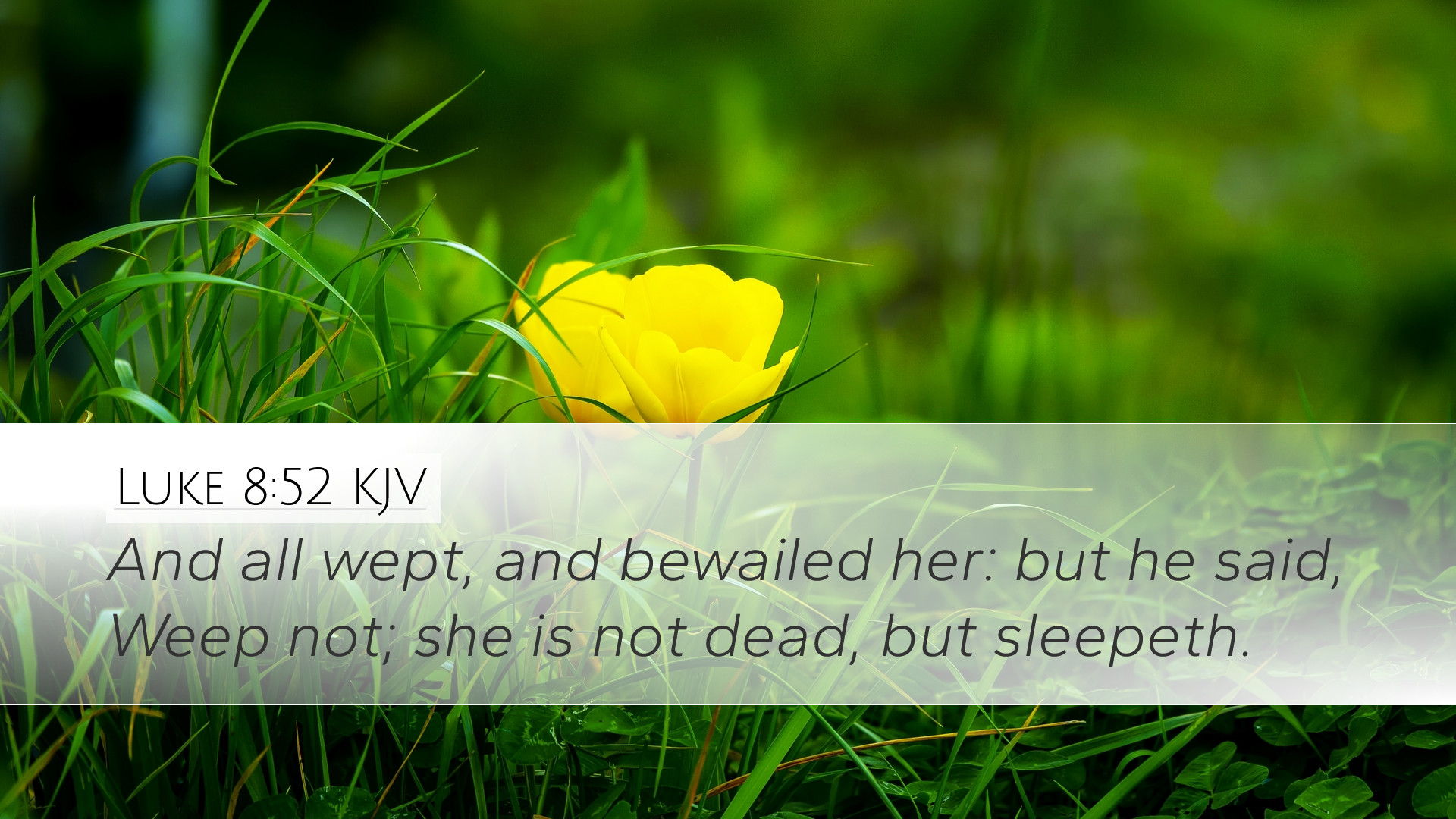Luke 8:52 - Summary and Commentary
This passage captures a moment of profound emotion and divine intervention in the context of Jesus’ ministry. The narrative occurs when Jesus arrives at the house of Jairus, a ruler of the synagogue, following the news of his daughter's death. The atmosphere is thick with despair, as articulated through the mourners who have gathered, demonstrating the human response to death.
Context of the Passage
The account in Luke 8:52 is part of a larger narrative where Jesus is approached by Jairus, who pleads for his dying daughter. On His way to Jairus’ house, Jesus is interrupted by a woman who had suffered from a hemorrhage for twelve years. This narrative structure exemplifies the theme of faith and the authority of Jesus over death and illness.
Exegesis of Luke 8:52
In Luke 8:52, we read, "And all wept and mourned for her: but he said, Weep not; she is not dead, but sleepeth." This declaration by Jesus showcases His divine perspective on death. What appears as the finality of death to the human eye is merely a sleep to Jesus, indicating his power to restore life.
Insights from Matthew Henry
Matthew Henry emphasizes the contrast between the response of the mourners and that of Jesus. He outlines how the professional mourners reacted with loud lamentations, reflecting cultural customs surrounding death. In contrast, Jesus brings a message of hope and assurance. Henry notes:
"The mourners thought they had great cause for their sorrow, but Christ makes light of it, showing His power over death and His authority to bring life."
Insights from Albert Barnes
Albert Barnes’ commentary furthers this understanding by emphasizing the phrase "she is not dead, but sleepeth." Barnes elaborates that Jesus doesn’t dismiss the reality of death but redefines it. He states:
"Death is compared to sleep in that it is a temporary state for the believer. Jesus’ words assure the reader of the hope that lies beyond this life."
Insights from Adam Clarke
Adam Clarke adds a theological dimension to this statement by addressing the nature of faith. He remarks on the disbelief surrounding Jesus’ proclamation. Clarke notes how the mourners’ reaction underscores the tension between faith and sight:
"To the eye of sense, the child was dead; to the eye of faith, she was only asleep, and this faith is crucial for understanding Jesus' ministry."
Theological Implications
This passage opens several theological discussions, particularly regarding the nature of Jesus' authority over life and death. It challenges readers to comprehend death not as the end but as a transition, particularly in light of Christ’s resurrection power. As such, this verse serves as a profound statement of the Christian hope in eternal life.
Practical Applications
- Comfort in Grief: Pastors can draw upon this passage to offer hope to those grieving, emphasizing that death should not invoke fear for the believer.
- Encouragement to Faith: This verse encourages believers to maintain faith in Christ’s power even in dire circumstances.
- Understanding Suffering: Students and theologians can explore the implications of suffering and its role in shaping faith, recognizing that it can serve as a catalyst for spiritual awakening.
Conclusion
Luke 8:52 stands as a testament to the transformative power of Jesus Christ. It invites believers to reflect on their understanding of death and the hope of resurrection. Through the insights of Matthew Henry, Albert Barnes, and Adam Clarke, we are reminded that Jesus speaks into our despair with words of life, asserting His authority and calling us to a deeper faith.


